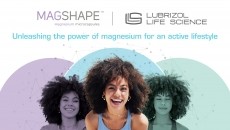Consumers interpret nutrition and health claims differently to regulators, says study

The researchers found that for new functional ingredients or less familiar nutrients, where associative beliefs had not yet formed, there were opportunities to educate the consumer.
Indeed, some participants faced with an unfamiliar nutrient or benefit sought means to educate themselves, citing ‘Google’ as their default means of accessing this information.
“Labelling food products with health claims could help people make better food choices but what we have found is that they don't always interpret claims in the way we assume they do,” said professor Monique Raats, lead researcher and director of the food, consumer behaviour and health research centre at the University of Surrey.
“It is important that consumer perspectives are taken into consideration when developing policy."
With the compulsory introduction of nutrition labelling for packaged foods in 2016, informed choices made by consumers has become linked to health policy that encourages healthier choices.
Often seen as complementary to nutrition labelling, nutrition and health claims communicate health-related information to the consumer on food packaging.
However, the number of nutrition and health claims appearing on European food products is a sticking point due to the lack of harmonised approach and their potential to mislead the consumer.
Although the Nutrition and Health Claims Regulation (NHCR) EC No 1924/2006, has exercised dictated the way claims are presented by manufacturers on pack, consumers’ interpretation of those claims is less well understood
Studies have claimed there is a lack of evidence to establish the extent to which the average consumer is really able to understand health claims.
Five-country collaboration
Along with researchers from Slovenia, Spain’s Centro de Investigación y Tecnología Agroalimentaria de Aragón (CITA); Germany’s Universität des Saarlandes; and the Universities of Oxford and Surrey, the team set about questioning 100 participants from the five countries.
Each subject was asked to free sort the cards into groups so all cards in one group were similar to each other and different from the other groups. They repeated this using a different sort rationale.
Next, subjects were asked to sort the same set of stimuli cards into groups against preassigned expert typology headings, which reflected the NHCR framework (structured sorting).
Finally, the participant completed the self-report background questionnaire and received a debriefing about the study.
The results revealed 82% of the sample said they were either the main shopper or shopping as frequently as someone else in their household for food products.
Results broken down by country were the UK at 85%, Netherlands (NL) 95%, Germany (DE) 75%, Slovenia (SL) 75% and Spain (ES) 80%.
In terms of use of text or image-based health claims on food products when shopping, 51% of the sample described themselves as using them either “Quite often” or “Very often”.
Additionally, 48% said they used them “Sometimes” or “Rarely” and only 1% stating that they never used health claims when shopping.
There were no significant differences between countries in terms of participants’ self-reported General Health Interest, Need for Cognition, Faith in Intuition or subjective knowledge of health claims.
However, post-hoc tests revealed a significant difference between Spain and the Netherlands in terms of their motivation to process health claims.
Spain reported the highest motivation to process health claims, with the Netherlands reporting the lowest, and the UK, Germany and Slovenia falling in between.
Three key dimensions proposed
“Our results provide useful insight into how consumers make sense of these claims and how claims may be optimised to enhance appropriate consumer understanding,” the paper said.
“They suggest consumers may not consciously differentiate between a nutrition claim and a health claim in the way that regulatory experts do and provide insight into where this might occur.
“A consumer-derived typology of health-related claims based on three key dimensions is proposed: (1) Familiarity with the nutrient, substance or food stated in the claim; (2) statement type in terms of simplicity/complexity; (3) relevance of the claim, either personally or for a stated population group.”
In summing up the team said current commercial efforts to promote new products displaying health claims do not include authoritative information or educational resource independent from industry for consumers to draw upon.
“The existing EU legislation and/or the scientific literature is of little use to the lay consumer in helping them to form new, or even correct, their existing associative networks for the nutrients, functions and benefits within the health claims arena both past and present.
“Since two of the three main constructs identified in the proposed typology—‘familiarity’ and ‘relevance’—are constructs with individual differences, the situation is further complicated by the fact that different consumers are likely to receive the same claims differently based on their established network and beliefs.”
Source: Nutrients
Published online: doi:10.3390/nu11030539
“Understanding How Consumers Categorise Health Related Claims on Foods: A Consumer-Derived Typology of Health-Related Claims.”
Authors: Charo Hodgkins et al.















